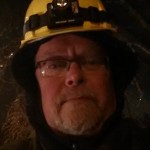Many cities in North America experienced extreme weather during the 2013 holiday season.
On Dec. 22, Toronto was struck by an ice storm which caused trees to become covered with large amounts of ice. Although it was often beautiful, it was also destructive. Many of the trees couldn’t support the weight of the ice and branches came crashing down. Some of the branches took out power lines, so hundreds of thousands of people in the city were without power for hours or days.
Hydro, Bell telephone and other workers took to the streets to fix the problems. Many of them worked around the clock in extremely cold conditions; the temperature dropped below -30C some nights.
Alan Dawson is a Hydro worker in Toronto. He and his crew worked for 12 hours a day for more than a week, fixing street lights during the ice storm. He said people were so grateful to the workers that once when he went into a coffee shop to warm up, the customers stood up, clapping, showing their gratitude with a standing ovation.
Public shelters were opened in the city so people could get warm and eat a hot meal. Many of the city’s police stations served as temporary shelters.
Neighbours helped neighbours. Many people who had power took in others who did not.

Some people also noticed an unusual weather event called a “frost quake.” Also known as “cryoseisms,” they occur after there has been snow or rain combined with extremely cold temperatures.
A frost quake happens when ice in the ground is forming and expanding, building up pressure. It can feel like an earthquake and may shake the ground (like an earthquake) or make a loud booming noise. Frost quakes are not dangerous.
Related link
The Globe and Mail posted this excellent video (2:01) explaining frost quakes.
CURRICULUM CONNECTIONS
By Jonathan Tilly
Writing/Discussion Prompt
Have you and your family ever been affected by extreme weather? What happened? How did you and/or your family cope? How do you and/or your family help neighbours during difficult times?
Reading Prompt: Making Inferences
It may be said that today’s article describes a cause and effect relationship. How so?
Primary
Make inferences about texts using stated and implied ideas from the texts as evidence (OME, Reading: 1.5).
Junior
Use stated and implied ideas in texts to make inferences and construct meaning (OME, Reading: 1.5).
Intermediate
Develop and explain interpretations of increasingly complex or difficult texts using stated and implied ideas from the texts to support their interpretations (OME, Reading: 1.5).
Grammar Feature: Scientific Language
Today’s article contains specific scientific language and terms. For example, the word “cryoseisms” is used to describe an unusual weather event called a “frost quake.”
When writing descriptively, why might an author benefit from including scientific terms? How are you affected by texts that include scientific vocabulary?







